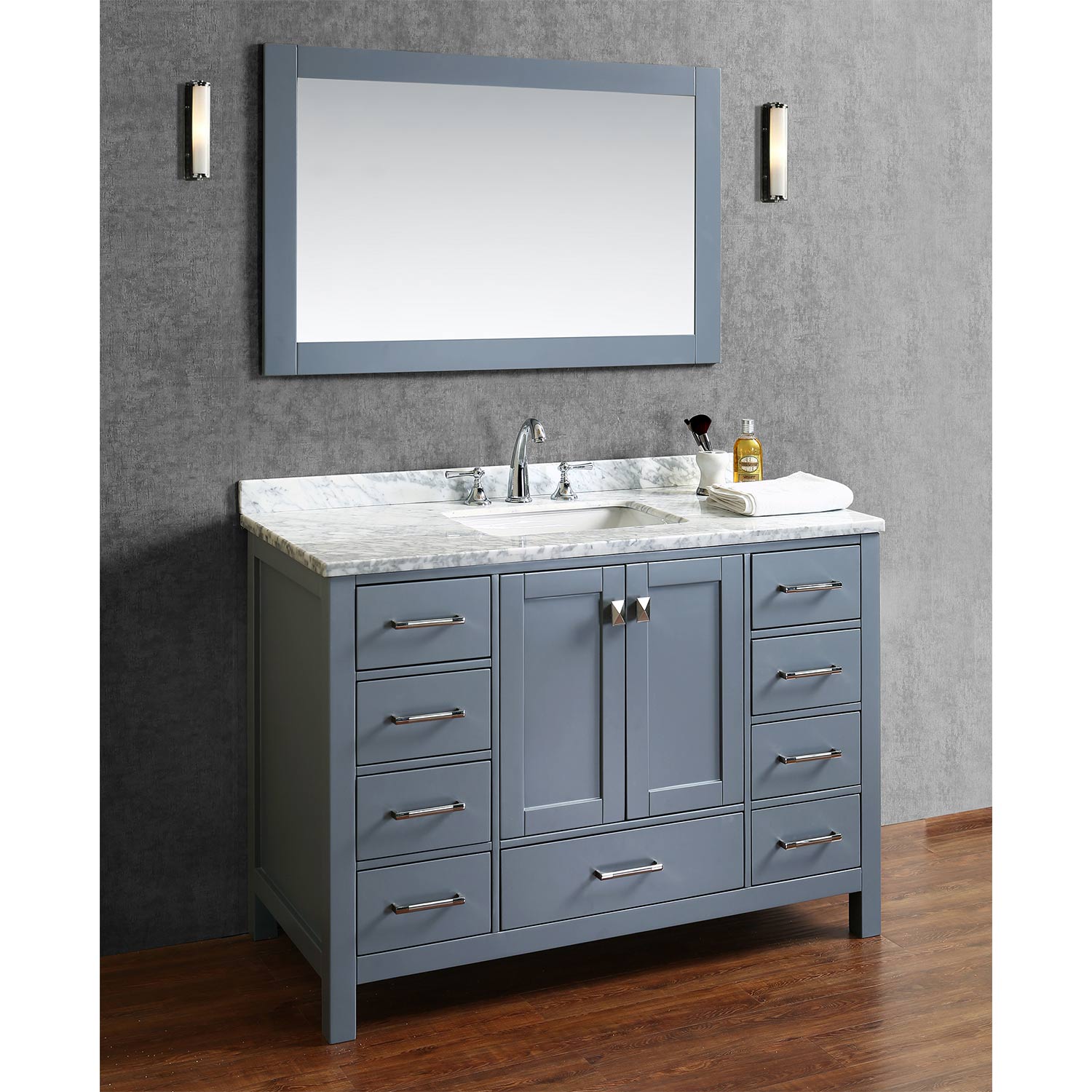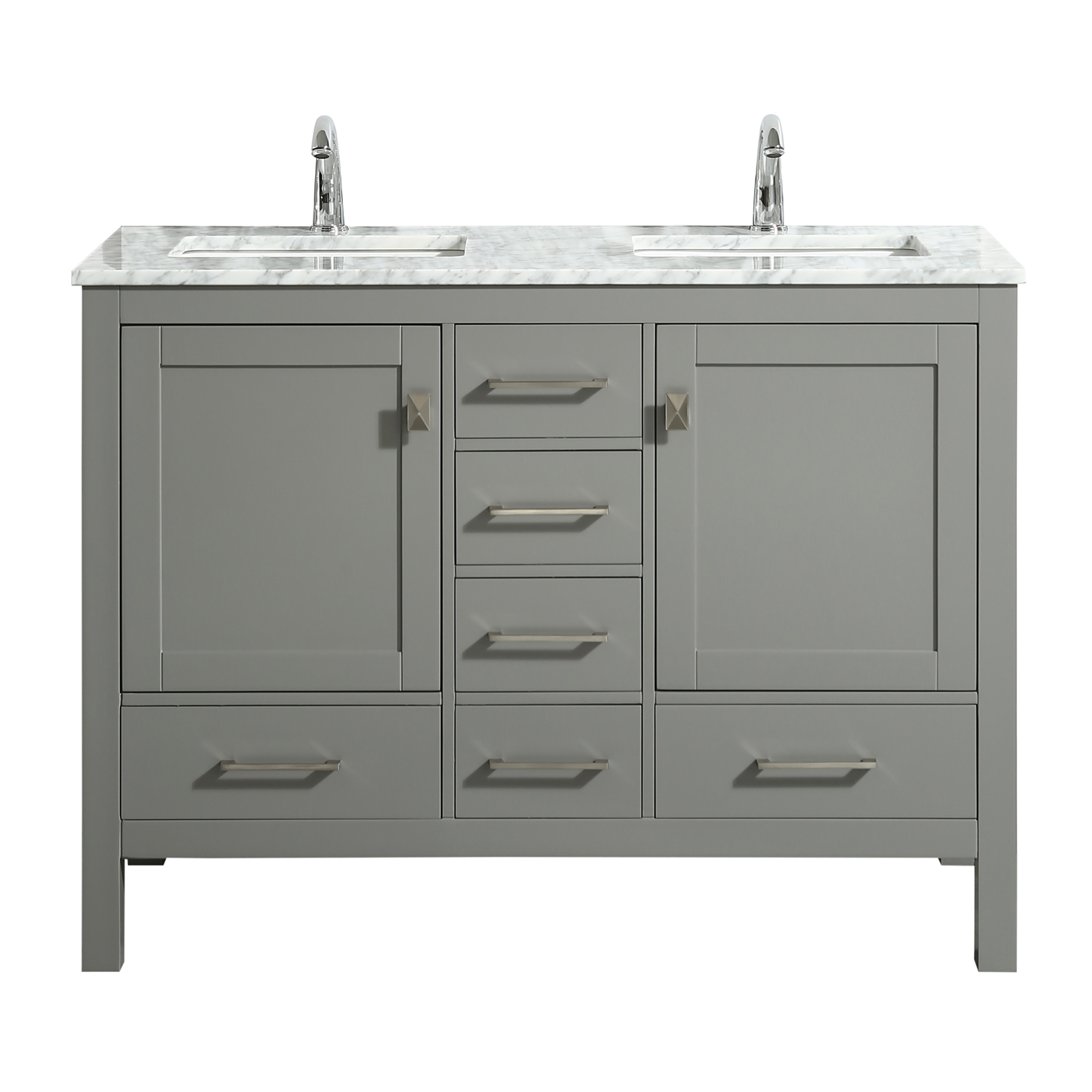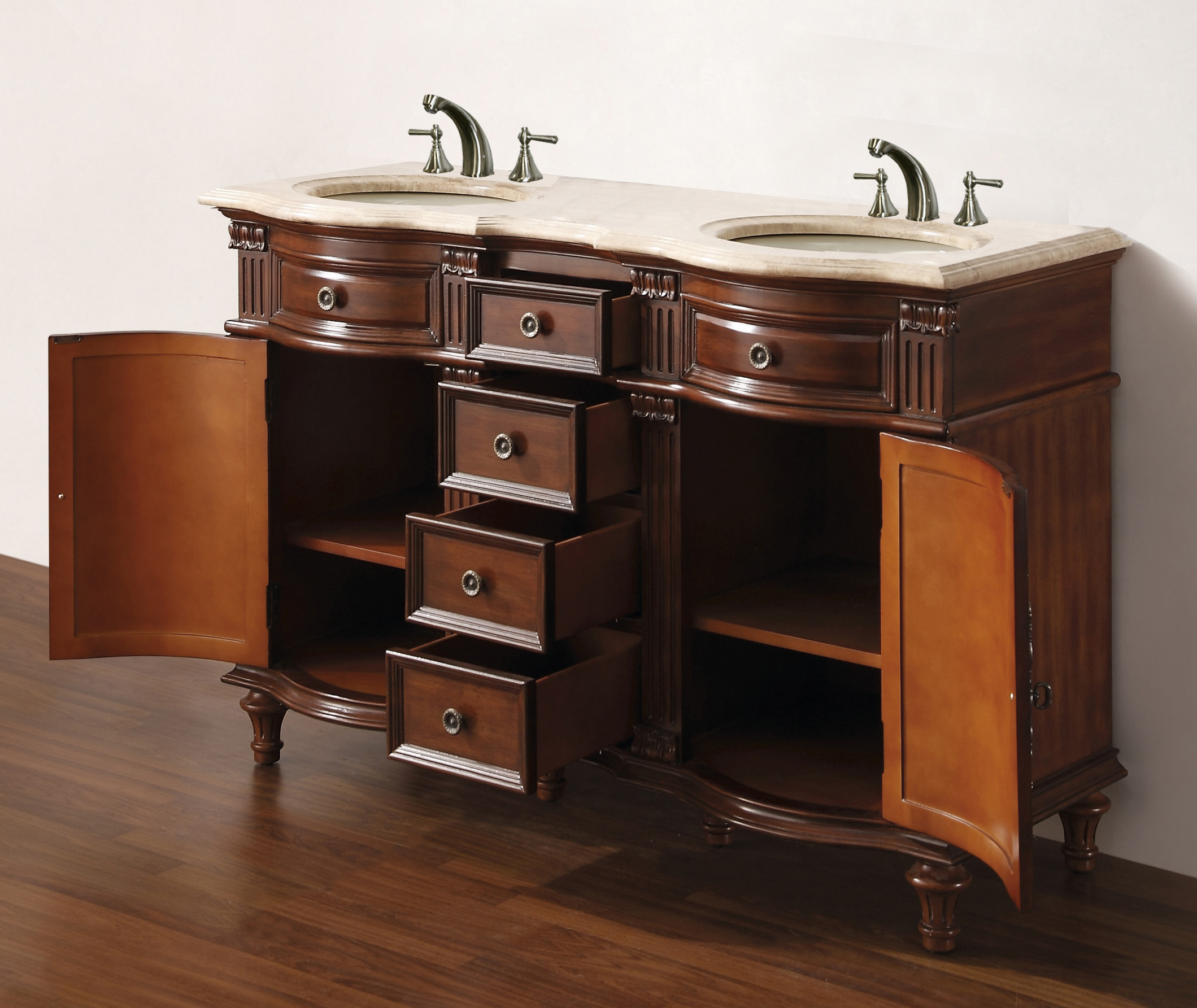Understanding the 17 Inch Bathroom Vanity

A 17-inch bathroom vanity is a compact option for smaller bathrooms, offering a balance between functionality and space-saving design. This size is often chosen for powder rooms, guest bathrooms, or smaller master bathrooms where maximizing space is a priority.
Dimensions and Features
A 17-inch bathroom vanity typically has a width of 17 inches and a depth of 18 to 21 inches. This allows for sufficient space for a small sink and a small cabinet for storage. The height of a 17-inch vanity is usually standard at 34 to 36 inches, making it accessible for most individuals. Some common features of a 17-inch vanity include a single or double sink, a single or double door cabinet, open shelving, and drawers for additional storage.
Styles and Materials
17-inch vanities come in various styles to complement different bathroom aesthetics.
- Modern: Modern vanities often feature sleek lines, minimalist designs, and clean edges. They are commonly made from materials like lacquered wood, stainless steel, or high-gloss laminates.
- Traditional: Traditional vanities embrace classic designs with ornate details, intricate carvings, and rich wood finishes. Common materials include solid wood, such as oak or cherry, with painted or stained finishes.
- Farmhouse: Farmhouse vanities often feature a rustic charm with distressed wood finishes, exposed hardware, and simple designs. They are typically made from reclaimed wood, distressed wood, or painted wood.
The choice of material depends on the desired aesthetic and budget. Wood is a popular choice for its durability, warmth, and natural beauty. Marble and granite offer elegance and durability, while laminate provides a more affordable and easy-to-clean option.
Advantages and Disadvantages
- Advantages:
- Space-saving: A 17-inch vanity is ideal for smaller bathrooms where space is limited.
- Cost-effective: Smaller vanities are generally less expensive than larger ones.
- Easy to install: Due to their compact size, 17-inch vanities are typically easier to install than larger ones.
- Disadvantages:
- Limited storage: A 17-inch vanity provides less storage space compared to larger vanities.
- Limited sink options: The small size of a 17-inch vanity may limit the choice of sink options.
Choosing the Right 17 Inch Bathroom Vanity

Choosing the right 17-inch bathroom vanity is a bit like picking the perfect outfit for a night out – you want something that fits, flatters, and reflects your personal style. But with so many options out there, it can be a bit overwhelming. Fear not, fellow bathroom renovator, we’re here to help you navigate this process and find the perfect vanity for your needs.
Factors to Consider When Choosing a 17-Inch Vanity
Before you start browsing online catalogues or visiting showrooms, it’s crucial to have a clear picture of what you’re looking for. Here’s a checklist of factors to consider:
- Space Limitations: Measure your bathroom space carefully, taking into account the door swing, plumbing location, and any other fixtures. You’ll need to ensure that the vanity fits comfortably and allows for easy movement.
- Desired Style: Do you want a modern, traditional, farmhouse, or contemporary vanity? Think about the overall style of your bathroom and choose a vanity that complements it.
- Budget: Set a realistic budget for your vanity, keeping in mind that prices can vary significantly depending on the materials, features, and brand.
- Storage Needs: Consider how much storage you need. Do you want drawers, shelves, or a combination of both?
- Countertop Material: Countertops can be made from various materials, each with its own pros and cons. Popular options include granite, marble, quartz, and laminate.
- Sink Style: You’ll need to decide on the sink style. Common options include undermount, vessel, and drop-in sinks.
- Faucet Finish: Choose a faucet finish that complements the vanity and other bathroom fixtures. Popular finishes include chrome, brushed nickel, and oil-rubbed bronze.
17-Inch Vanity Options
Here’s a table showcasing some popular 17-inch vanity options, their price ranges, features, and pros and cons:
| Vanity Style | Price Range | Features | Pros | Cons |
|---|---|---|---|---|
| Modern | £300 – £1,000 | Sleek design, minimal hardware, often with open shelving | Contemporary look, easy to clean | Can be more expensive, limited storage |
| Traditional | £250 – £800 | Classic design, often with intricate details, usually with drawers | Timeless look, versatile | May be less space-efficient |
| Farmhouse | £350 – £1,200 | Rustic design, often with wood accents, usually with open shelving | Warm and inviting, adds character to the bathroom | Can be more expensive, may require more maintenance |
| Contemporary | £400 – £1,500 | Clean lines, minimalist design, often with integrated sinks | Sleek and modern, easy to clean | Can be more expensive, limited storage |
Measuring Your Bathroom Space
Accurately measuring your bathroom space is crucial to ensure that your 17-inch vanity fits perfectly. Here’s how to do it:
- Measure the width of the space: Make sure to measure the width of the area where you plan to install the vanity, including any protruding pipes or fixtures.
- Measure the depth of the space: You’ll need to consider the depth of the vanity and leave enough room for the door to open and close freely.
- Measure the height of the space: Make sure that the vanity will fit comfortably within the space and that you have enough clearance for the countertop and sink.
Tip: It’s always a good idea to add a few extra inches to your measurements to allow for wiggle room during installation.
Installing a 17 Inch Bathroom Vanity

Installing a 17-inch bathroom vanity can be a rewarding DIY project, adding a touch of style and functionality to your bathroom. This guide provides a comprehensive overview of the installation process, from preparing the space to connecting the plumbing and securing the vanity.
Preparing the Installation Area
Before you begin, it’s crucial to prepare the installation area. This involves clearing the space, removing any existing fixtures, and ensuring the wall is ready to support the vanity.
- Clear the area around the intended location of the vanity, removing any obstructions or existing fixtures.
- Disconnect the water supply to the existing sink or fixtures. Turn off the water valve and drain the pipes to prevent water damage.
- Remove the existing sink and countertop. If you’re replacing an existing vanity, carefully remove it, taking note of the plumbing connections and any electrical wiring.
- Inspect the wall for any damage or unevenness. If necessary, repair any cracks or holes, and ensure the wall is smooth and level.
Connecting the Plumbing
Connecting the plumbing to the vanity is a critical step that requires careful attention. This involves connecting the water supply lines and the drain pipe to the vanity’s plumbing fixtures.
- Connect the water supply lines to the vanity’s faucets. Use appropriate fittings and tools to ensure a secure and leak-proof connection. Ensure the water supply lines are properly routed and secured to the wall or vanity.
- Connect the drain pipe to the vanity’s sink drain. Use a drain pipe that fits the vanity’s drain opening and connects to the existing drain line in the bathroom. Ensure the drain pipe is properly secured and has a smooth transition to the main drain line.
- Test the plumbing connections for leaks. Turn on the water supply and check for any leaks at the faucet, drain pipe, or any other connection points. If you find any leaks, tighten the connections or replace any faulty fittings.
Securing the Vanity to the Wall
Securing the vanity to the wall is essential for stability and safety. Use appropriate anchors and screws to ensure the vanity is firmly attached to the wall.
- Locate the studs in the wall using a stud finder. Ensure the vanity is positioned over the studs for maximum support.
- Mark the location of the mounting holes on the wall using a pencil or marker. Drill pilot holes into the wall using a drill bit slightly smaller than the screw size.
- Secure the vanity to the wall using appropriate anchors and screws. Ensure the screws are long enough to reach the studs and provide a strong hold.
- Check the vanity for stability. Gently push and pull on the vanity to ensure it’s securely attached to the wall and doesn’t wobble or move.
Installing the Countertop
The countertop is the final touch that completes the vanity installation. This involves carefully positioning and securing the countertop to the vanity base.
- Place the countertop on the vanity base, aligning it with the vanity’s edges. Ensure the countertop is level and sits flush with the vanity base.
- Secure the countertop to the vanity base using appropriate fasteners. This may involve screws, clamps, or adhesive, depending on the countertop material and the vanity design.
- Apply sealant around the edges of the countertop to prevent water damage. Ensure the sealant is applied evenly and allowed to dry completely.
- Install the sink and faucet. Carefully place the sink in the countertop opening and secure it using appropriate fasteners. Install the faucet according to the manufacturer’s instructions.
Ensuring Proper Drainage and Ventilation, 17 inch bathroom vanity
Proper drainage and ventilation are crucial for preventing moisture buildup and maintaining a healthy bathroom environment.
- Ensure the drain pipe is properly connected and has a smooth transition to the main drain line. This prevents clogs and ensures proper water drainage.
- Ensure the vanity has adequate ventilation. This can be achieved by installing a vent fan above the vanity or by ensuring the bathroom has sufficient natural ventilation. Proper ventilation helps to remove moisture and prevent mildew growth.
Safety Precautions During Installation
Safety is paramount during the installation process. Always wear appropriate safety gear and follow these precautions:
- Wear safety glasses to protect your eyes from debris or falling objects.
- Use work gloves to protect your hands from cuts or scratches.
- Turn off the water supply before disconnecting any plumbing connections.
- Use caution when handling sharp tools and heavy objects.
- Ensure the installation area is well-lit and free of clutter.
